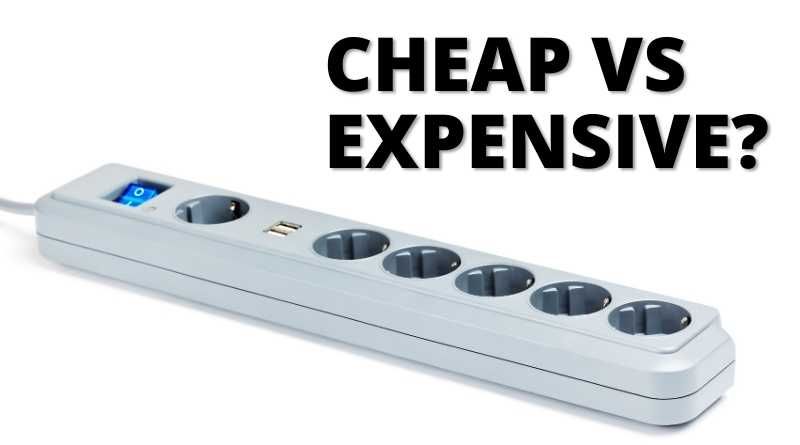One of the places on the planet where you wish you could feel protected from current-voltage surges or power spikes is on a cruise ship. However, as strange as it seems, the use of surge protectors on cruise ships is prohibited.
What the heck is going on here?
Why are Surge Protectors banned on cruise ships when they should provide more protection?
Table of Contents
Why Are Surge Protectors Banned On Cruise Ships?
Surge protectors and extension cords are forbidden on cruise ships and will be confiscated because of potential fire hazards resulting from electrical malfunctions. Because onboard voltage levels on a ship differ from those in cities, most surge protectors, power strips, and extension cords aren’t safe.
These devices may not protect your home from electrical hazards, even if they’re supposed to. In short, many of the surge protectors currently found in homes would be unsafe on a cruise ship (for an ironic reason); namely, they could cause fires. Apart from fires they are also known to interrupt with the ships system and wiring systems.
When a household surge protector is used in a ship’s power outlet, voltage fluctuations can occur when the ship is suffering from choppy waters.

Wrong Usage
I agree that surge protectors are great for people who don’t want their electronics to be damaged by power surges. However, if you are visiting a cruise ship, you already know that surge protectors aren’t allowed in the ship’s rooms.
- The issue is that some people plug too many things into the electrical outlets, overload the surge protectors, and plug in too many things, causing accidents and fires. When it’s overworked, it can cause serious damage to your devices, and may even start a fire. The reason that surge protectors tend to be banned from cruise ships has to do with this very reason.
As I mention above, surge protectors protect the item you have plugged into them as well as any other device you have plugged into them.
- Sometimes people connect surge protectors together in order to extend the length of cords. This may result in an overload, which may lead to a fire. If you use a surge protector without thinking about the possible consequences of overloading it, you are at risk of causing a fire.
Alternative To Bring On A Cruise Ship
What you’ll likely pack is a lot of electronics, especially if you are going on a cruise. iPhones, iPads, hair-straighteners, fans — these are just a few.
If you have connected devices with you that need charging, such as phones, tablets, TVs, laptops, speakers, and so on, that is great!
In an average hotel room, however, you may be challenged to charge them all at the same time. The power outlets will likely be full by then. In fact, this is a common issue in every place where you go. However, that problem is even worse when we are on a cruise ship!
The majority of cruise ships offer only one power socket. What this means for you is you’ll most likely need to carry around several plugs during your cruise.
As a result, you are left with a problem. The leading cabin accessory, an outlet tap, is the solution. As a matter of fact, this is the most important cabin accessory that we consider.
You can find taps such as this one for less than $5! We love the outlets that are made by General Electric. One outlet is converted into three outlets while taking up a very little space on the wall.
What we have learned is that using a surge protector with an outlet tap or power strip is not a good idea. The cruise ship in its rule against the use of surge protectors has implemented a ban on power strips or outlet taps in order to avoid problems with the onboard electrical system.
Know If Your Surge Protector Is Safe (Even Not In Cruise Ships!)
It is always recommended that you should check your surge protectors frequently, and replace them if they are worn out. If there is a question regarding their quality or construction, the product should be avoided at all costs.
One of the leading manufacturers of building and product safety, Underwriter Laboratories or UL, recently warned in a recent product safety alert, that surge protectors of low quality could also be hazardous. ”
If you have several surge protectors in your home or you are planning to bring them on a cruise ship (do not!) I would like you to learn about the following potentially dangerous situations:
- Make sure you are super careful when it comes to power. Each surge protector should be plugged directly into the outlet to avoid the chance of an electrical fire starting when the surge protector is plugged into another surge protector. Just make sure the surge protector goes all the way into a wall outlet.
- One surge protector should go into a single electrical outlet. If there is more than one surge protector plugged into one outlet, the chances of things going wrong are exponentially greater.
- Always avoid putting your surge protector in an environment where it will be exposed to moisture or water.
If you see any loose or frayed bits, if it gets hot to the touch or if it doesn’t have a circuit breaker you need to replace it as soon as possible.
Conclusion
As it does turn out, Surge Protectors are forbidden on cruise ships because they can cause fires and disturbance in the system and wiring of the ship. Not only is the problem with the interference that can be caused by the use of surge protectors a large one, but in addition the magnetic field from the equipment that is used as a surge protector can cause the navigation systems of ships to fail if not removed. As a precaution, you should never rely on a surge protector when on a cruise ship



